
Żegota was the Polish Council to Aid Jews with the Government Delegation for Poland, an underground Polish resistance organization, and part of the Polish Underground State, active 1942–45 in German-occupied Poland. Żegota was the successor institution to the Provisional Committee to Aid Jews and was established specifically to save Jews. Poland was the only country in German-occupied Europe where such a government-established and -supported underground organization existed.
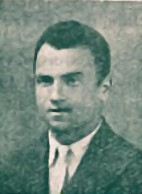
Szymon Datner was a Polish historian, Holocaust survivor and underground operative from Białystok, best known for his studies of the Nazi war crimes and events of The Holocaust in the Białystok region. His 1946 Walka i zagłada białostockiego ghetta was one of the first studies of the Białystok Ghetto.

The Blue Police, was the police during the Second World War in the General Government, semicolonial entity on a territory of German-occupied Poland. Its official German name was Polnische Polizei im Generalgouvernement.

Szmalcownik ; in English, also sometimes spelled shmaltsovnik) is a pejorative Polish slang expression that originated during the Holocaust in Poland in World War II and refers to a person who blackmailed Jews who were in hiding, or who blackmailed Poles who aided Jews, during the German occupation. By stripping Jews of their financial resources, blackmailers added substantially to the danger that Jews and their rescuers faced and increased their chances of being caught and killed.
Anti-Jewish violence in Poland from 1944 to 1946 preceded and followed the end of World War II in Europe and influenced the postwar history of the Jews as well as Polish-Jewish relations. It occurred amid a period of violence and anarchy across the country, caused by lawlessness and anti-communist resistance against the Soviet-backed communist takeover of Poland. The estimated number of Jewish victims varies and ranges up to 2,000. In 2021, Julian Kwiek published the first scientific register of incidents and victims of anti-Jewish violence in Poland in 1944-1947, according to his calculations, the number of victims was at least 1,074 to 1,121. Jews constituted between 2% and 3% of the total number of victims of postwar violence in the country, including the Polish Jews who managed to escape the Holocaust on territories of Poland annexed by the Soviet Union, and returned after the border changes imposed by the Allies at the Yalta Conference. The incidents ranged from individual attacks to pogroms.

Polish Jews were the primary victims of the Nazi Germany-organized Holocaust in Poland. Throughout the German occupation of Poland, Jews were rescued from the Holocaust by Polish people, at risk to their lives and the lives of their families. According to Yad Vashem, Israel's official memorial to the victims of the Holocaust, Poles were, by nationality, the most numerous persons identified as rescuing Jews during the Holocaust. By January 2022, 7,232 people in Poland have been recognized by the State of Israel as Righteous among the Nations.

POLIN Museum of the History of Polish Jews is a museum on the site of the former Warsaw Ghetto. The Hebrew word Polin in the museum's English name means either "Poland" or "rest here" and relates to a legend about the arrival of the first Jews to Poland.
Zagłada Żydów. Studia i Materiały is a Polish academic journal published yearly by a group of historians and researchers from the Polish Center for Holocaust Research created in 2003 in Warsaw. It is an annual devoted to the topics connected with the broadly understood Holocaust research. The target audience could include academics dealing with the Holocaust, but also college and university students, as well as broader public interested in this topic. Each volume forms individual and self-contained monograph. Authors of the articles represent various generations and scholarly approaches. The common characteristic is their frequent reevaluation of primary and secondary sources as well as the popular perception of truth. Important part of the journal consists of book reviews.
The Polish Center for Holocaust Research is an academic and research center at the Polish Academy of Sciences in Warsaw, Poland. The center's director is historian Barbara Engelking.
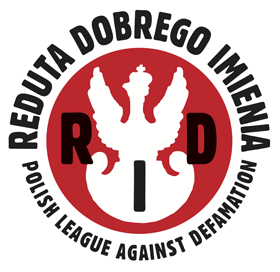
The Polish League Against Defamation is a right-wing nationalist non-governmental organization based in Warsaw, Poland. It was founded in 2013 by Maciej Świrski. Critics of the organization argue that its aggressive tactics have the opposite of the intended effect.

Jan Grabowski is a Polish-Canadian professor of history at the University of Ottawa, specializing in Jewish–Polish relations in German-occupied Poland during World War II and the Holocaust in Poland.

Hunt for the Jews: Betrayal and Murder in German-Occupied Poland is a 2013 book about the Holocaust in Poland by Jan Grabowski. The 2013 English edition followed a 2011 Polish-language edition and was in turn followed by a 2016 Hebrew edition.
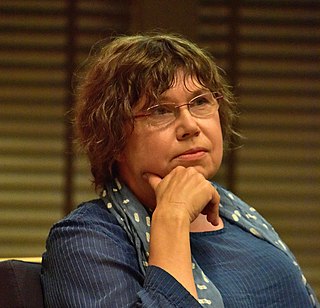
Barbara Engelking is a Polish psychologist and sociologist specializing in Holocaust studies. The founder and director of the Polish Center for Holocaust Research in Warsaw, she is the author or editor of several works on the Holocaust in Poland.
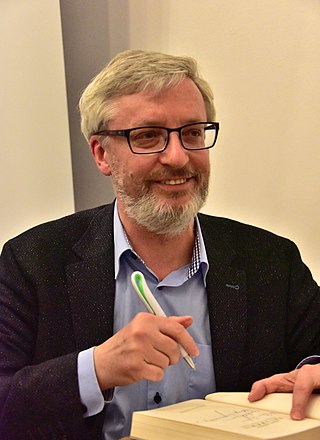
Jacek Leociak is a Polish literary scholar and historian as well as author. He is a professor of humanities and an employee of the Institute of Literary Research at the Polish Academy of Sciences and the Polish Center for Holocaust Research in Warsaw.

Golden Harvest is a 2011 book about the Holocaust in Poland. It was written by historians Jan T. Gross and Irena Grudzińska-Gross. It was first published in Polish in March 2011, with an English translation following in 2012.

The Polish Underground and the Jews, 1939–1945 is a book by American historian Joshua D. Zimmerman, published in 2015 by Cambridge University Press, discussing relations between Poland's Jewish population and the Polish resistance in World War II. Zimmerman argues that polarized narratives, one picturing the Polish underground as anti-Semitic and murderous toward Jews and the other hand as heroically rescuing them, are oversimplified; in fact, different segments and members of the Home Army behaved in diverse ways. The book has received mostly-positive reviews for its evenhanded treatment of a contentious subject matter.

Beyond Violence: Jewish Survivors in Poland and Slovakia, 1944–48 (2014) is a book by the Polish historian Anna Cichopek, based on her PhD thesis at the University of Michigan, which examines Holocaust survivors in postwar Poland and Slovakia and how they went about regaining their Aryanized property, obtaining citizenship in their country of residence, and dealing with violence from non-Jews.
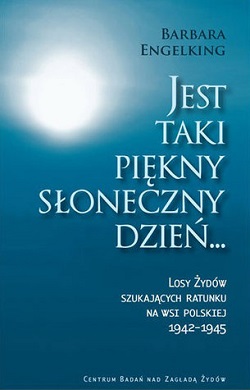
Such a Beautiful Sunny Day: Jews Seeking Refuge in the Polish Countryside, 1942–1945 is a 2016 book by Polish historian Barbara Engelking. It was first published in Polish in 2012 as Jest taki piękny, słoneczny dzień: Losy Żydów szukających ratunku na wsi polskiej 1942–1945. It focuses on the subject matter of The Holocaust in Poland.

Mirosław Tryczyk is a Polish philosopher, writer, reporter, and Holocaust researcher.
Glaukopis is a nationalist Polish history journal catering to the far right. It was founded by Wojciech Muszyński.
















